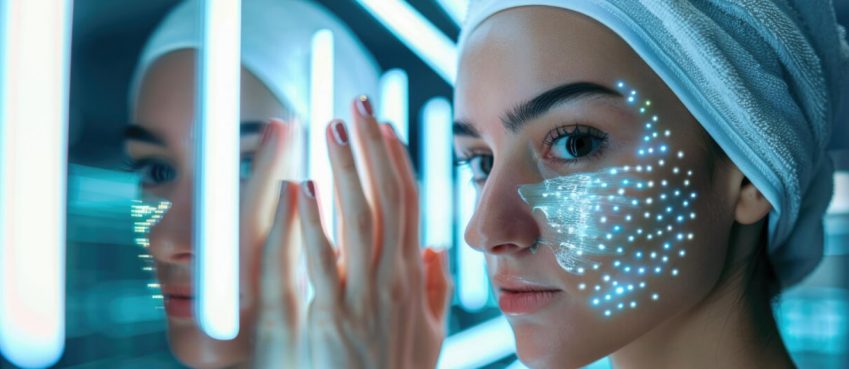
In an era where technology and medicine intertwine more closely than ever, medical device technology stands at the forefront of this exciting confluence. Advancements in this field are not just enhancing healthcare outcomes but are also reshaping patient care and medical practices globally. This article delves into the recent innovations in medical device technology, exploring how they are revolutionizing the healthcare industry.
Wearable Health Monitors: Revolutionizing Personal Healthcare
Wearable health monitors have transcended beyond being mere fitness trackers. Today, these devices offer unprecedented accuracy and user-friendliness, making them indispensable tools in preventive healthcare. The latest generation of smartwatches, for instance, incorporates advanced heart rate sensors, blood oxygen level detection, and even electrocardiogram (ECG) capabilities. A study by Stanford Medicine reported a 97% accuracy rate in detecting atrial fibrillation using smartwatch ECGs. These wearables empower individuals to monitor their health metrics continuously, leading to early detection of potential health issues.
Robotic Surgery: Precision and Efficiency in the Operating Room
Robotic surgery represents a significant leap in surgical precision and efficiency. These robotic systems, such as the da Vinci Surgical System, have transformed complex surgical procedures. They offer enhanced dexterity, reduced tremor, and high-definition 3D visualization, leading to more accurate and less invasive surgeries. The global market for surgical robots is projected to reach USD 14.4 billion by 2026, indicating the rapid adoption of this technology. Robotic assistance in surgeries not only improves patient outcomes but also reduces recovery times.
Also read: 10 Top Android Apps For Personal FinancesTelemedicine and Remote Monitoring: A New Era of Patient Care
The rise of telemedicine has been one of the most significant shifts in healthcare delivery. Remote monitoring devices, integrated with AI and machine learning, are playing a crucial role in this transformation. These technologies allow for real-time patient monitoring, early intervention, and personalized care plans. For instance, remote cardiac monitoring devices have shown a 50% reduction in hospital readmissions for heart failure patients, as per a study by the American Heart Association. Telemedicine is not just a convenience; it’s a critical component in managing chronic diseases and reducing healthcare costs.
3D Printing: Personalized Prosthetics and Implants
3D printing technology is reshaping the realm of prosthetics and implants. This technology allows for the creation of custom-designed medical devices that perfectly match a patient’s anatomy. The use of 3D-printed titanium in orthopedic implants, for example, has shown a significant increase in patient comfort and implant longevity. The market for 3D-printed medical devices was valued at approximately USD 1.88 billion in 2022 and is expected to grow steadily. The ability to produce personalized medical devices on demand marks a new chapter in patient-specific treatment.
Nanotechnology: A Giant Leap in Tiny Devices
Nanotechnology in medicine is opening new frontiers in diagnostics and drug delivery. Nanodevices, often smaller than human cells, can travel within the body to diagnose and treat diseases at a molecular level. One of the most promising applications of nanotechnology is in targeted drug delivery, particularly in cancer treatment. Nanoparticles can be designed to specifically target cancerous cells, reducing the side effects of chemotherapy. As nanotechnology continues to evolve, its potential to treat complex diseases more effectively and less invasively is immense.
AI and Machine Learning: Smart Medical Devices
Artificial Intelligence (AI) and machine learning are revolutionizing medical devices by enhancing diagnostics, patient monitoring, and predictive analytics. AI-driven devices are becoming increasingly prevalent in detecting patterns in patient data that would be imperceptible to the human eye. For instance, AI algorithms in diagnostic imaging can identify abnormalities with a higher accuracy rate than traditional methods. The global AI in the medical device market is projected to reach USD 34.9 billion by 2026, showcasing the growing reliance on these intelligent technologies in healthcare.
Advanced Imaging Technologies: A Clearer View into the Human Body
Recent innovations in medical imaging technology have significantly improved diagnosis and treatment planning. Advanced imaging techniques like portable MRI machines and enhanced ultrasound imaging provide high-resolution images, enabling accurate diagnoses without the need for invasive procedures. Portable MRI technology, for instance, has made it possible to conduct brain scans in remote locations, breaking down barriers to patient access to advanced diagnostic tools. These advancements not only improve patient care but also significantly reduce the time and cost associated with traditional imaging methods.
Virtual and Augmented Reality: Transforming Medical Training and Treatment
Virtual Reality (VR) and Augmented Reality (AR) technologies are making significant inroads in medical training and treatment. These technologies offer immersive experiences for surgical training, patient education, and even therapeutic interventions. VR simulations have become an integral part of medical education, providing trainees with a risk-free environment to practice procedures. Additionally, AR is being used in surgeries to provide real-time, 3D anatomical visualizations, enhancing the surgeon’s precision and efficiency.
Cybersecurity and Data Privacy: Protecting Sensitive Medical Information
As medical devices become increasingly interconnected, the importance of cybersecurity and data privacy cannot be overstated. The integration of IoT in medical devices has raised concerns regarding the vulnerability of patient data. Manufacturers and healthcare providers must prioritize securing medical devices against cyber threats. Collaborations with EU Regulatory Consultancy services are crucial in ensuring compliance with stringent data protection laws and regulations and safeguarding patient information in this digital age.
This comprehensive exploration into the latest innovations in medical device technology underscores the rapid pace at which this field is evolving. From wearable health monitors to advanced surgical robots, these technologies are not just futuristic concepts but are actively shaping the present and future of healthcare. As we continue to witness these remarkable advancements, it’s clear that the intersection of technology and medicine holds boundless potential for improving patient care and health outcomes worldwide.
Top 10 News
-
01
Top 10 Deep Learning Multimodal Models & Their Uses
Tuesday August 12, 2025
-
02
10 Google AI Mode Facts That Every SEOs Should Know (And Wha...
Friday July 4, 2025
-
03
Top 10 visionOS 26 Features & Announcement (With Video)
Thursday June 12, 2025
-
04
Top 10 Veo 3 AI Video Generators in 2025 (Compared & Te...
Tuesday June 10, 2025
-
05
Top 10 AI GPUs That Can Increase Work Productivity By 30% (W...
Wednesday May 28, 2025
-
06
[10 BEST] AI Influencer Generator Apps Trending Right Now
Monday March 17, 2025
-
07
The 10 Best Companies Providing Electric Fencing For Busines...
Tuesday March 11, 2025
-
08
Top 10 Social Security Fairness Act Benefits In 2025
Wednesday March 5, 2025
-
09
Top 10 AI Infrastructure Companies In The World
Tuesday February 11, 2025
-
10
What Are Top 10 Blood Thinners To Minimize Heart Disease?
Wednesday January 22, 2025







